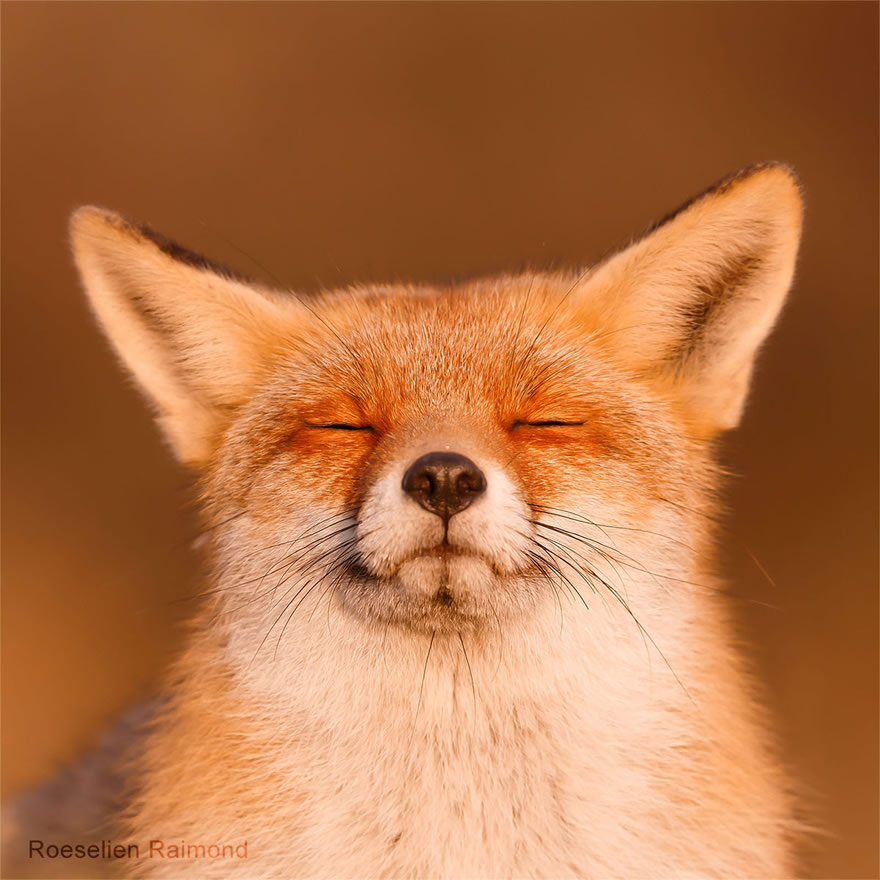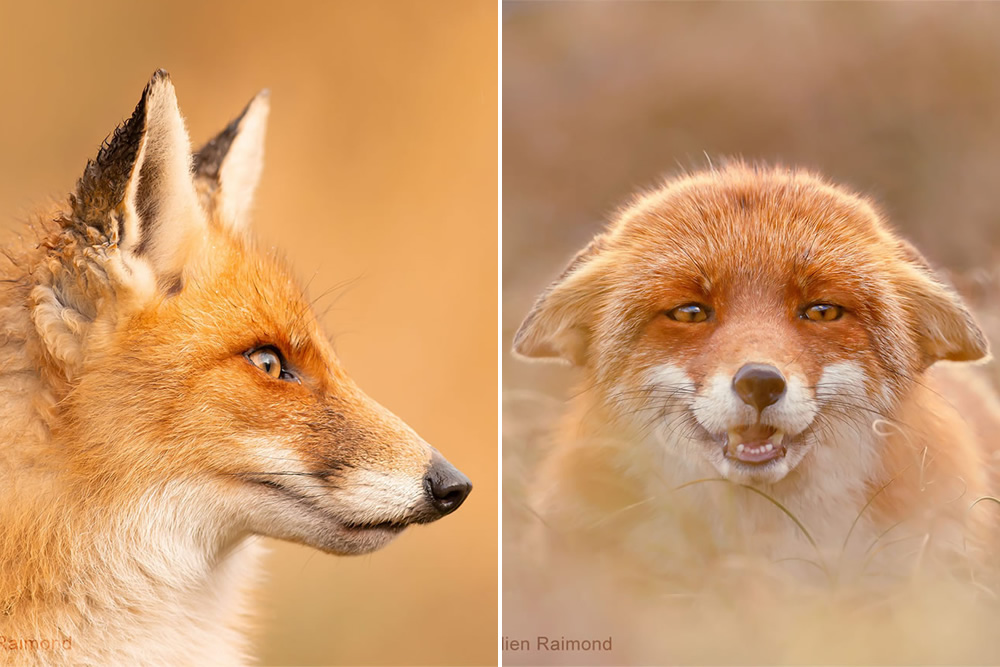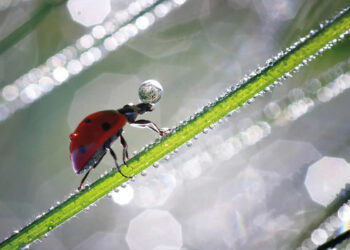‘Don’t you have enough fox pictures yet?’ A question I get asked regularly. And my answer is always the same: ‘Not by a long shot!’ Those photos are just a great excuse to stalk these fantastic animals for over ten years. And no, I can’t get enough. In fact, every day I find them a little sweeter and more beautiful.
You can find Roeselien Raimond on the Web:
Sixty four foxy faces
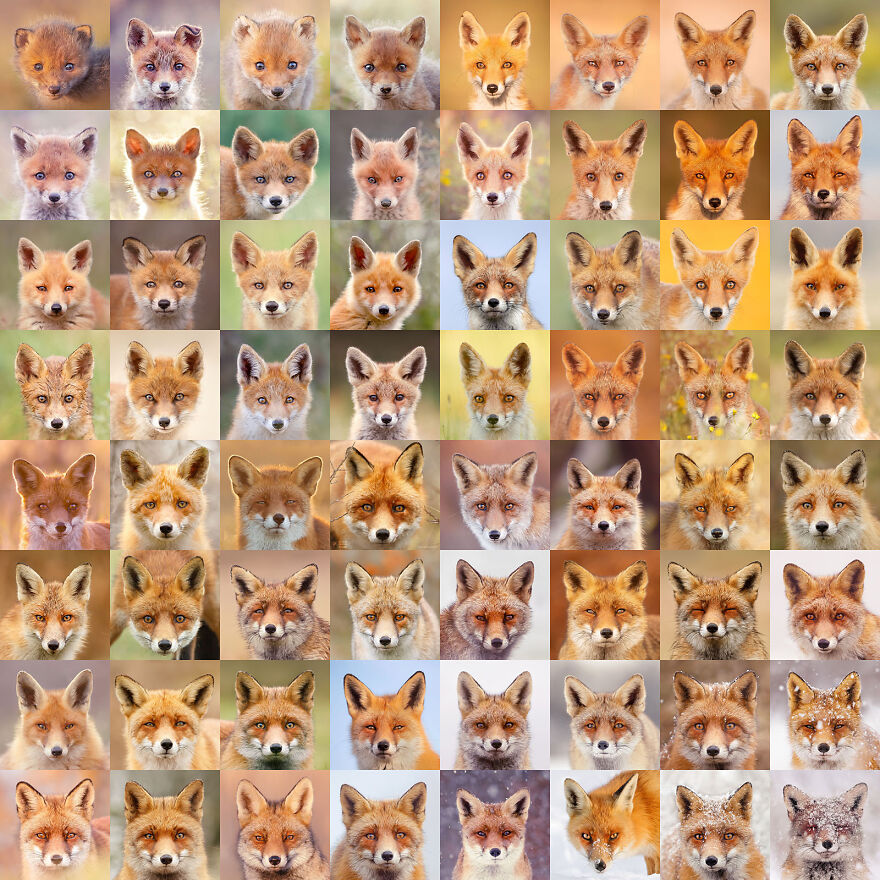
The Smiling Fox
I remember ‘my’ first fox (2009) like it was yesterday; A beautiful lady who always seemed to be smiling. Enjoy could have been her middle name. The story goes that she was raised as an orphan fox by foresters. I don’t know if it’s true. I do know that I was amazed at her trust in people.
Sometimes I was sitting in a dune pan when she would surprise me with a visit. Quietly she would come and sit next to me, look at me and squeeze her eyes with satisfaction. I looked back, did the same and… for a moment the world was perfect. She taught me the art of ‘being in the moment’.
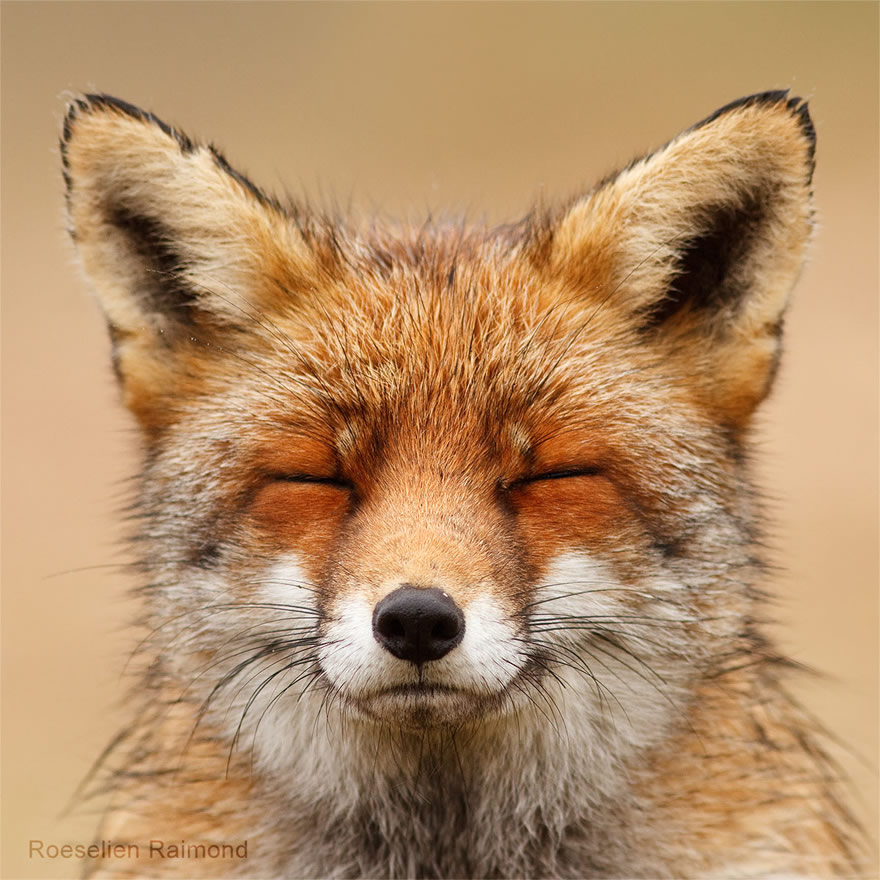
The Vixen. Smiling and squinting.
Flatheads & Longnoses
At the time, there were roughly two types of foxes in that area. One group looked like every part of them came rolling out of a round mold: Strikingly round ears, big round eyes, fluffy round bodies and round faces with a short nose. These foxes I lovingly nicknamed the Flatheads. In addition, there was a second family with an almost opposite appearance. Beautiful orange-red, slender foxes with a natural elegance, long pointy ears and large slanted eyes that gave them an almost sultry expression. Inspired by their exceptionally long noses, I called them – how could it be otherwise – The Longnoses.
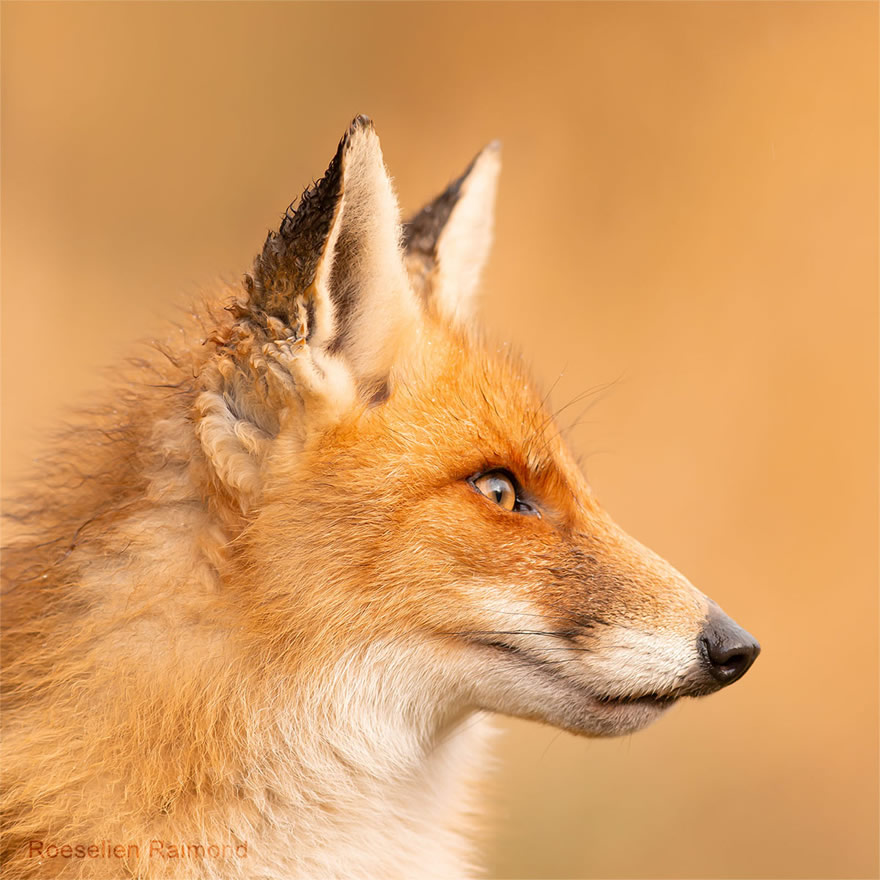
Longnose fox
The average fox
Although the Flatheads and Longnose were rival clans, I suspect there must have been regular love affairs, which mixed the bloodlines against all the rules. Over the years I noticed both sharp and rounded edges slowly disappear. Longnoses and Flatheaded seemed to blend into what could be characterized as an ‘average fox’.
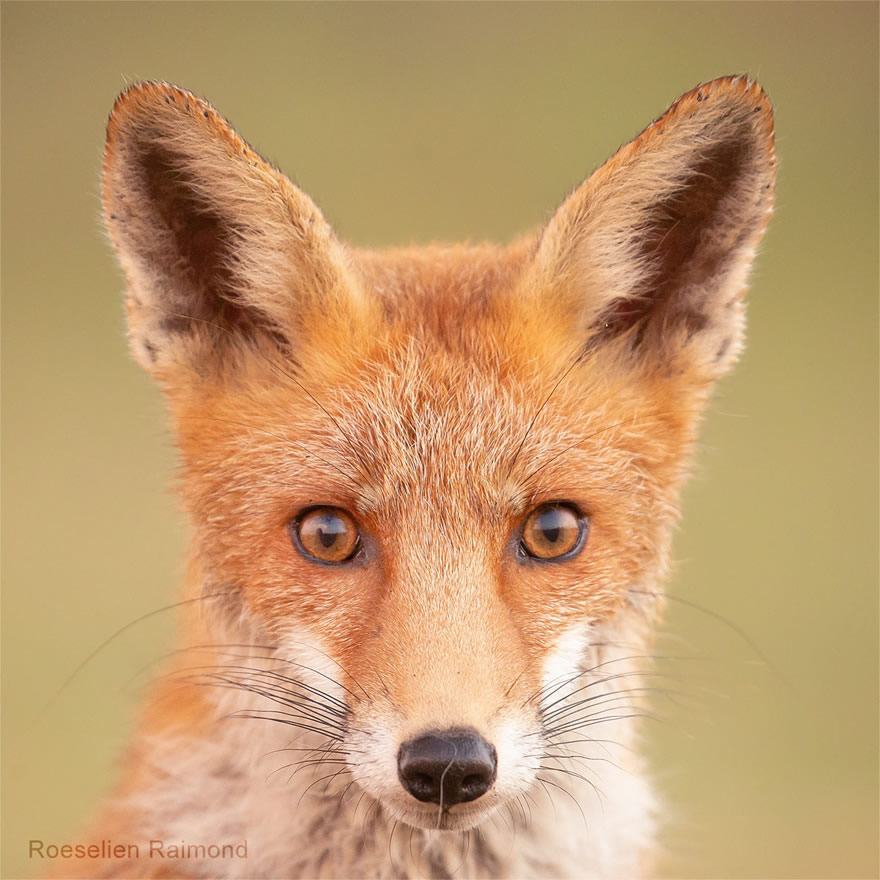
The ‘average fox’, a kind of archetype fox with ‘ordinary’ ears, eyes and face shape.
Facing foxes
‘How can you tell all these foxes apart?’ By now I must have roughly met about 50 foxes. And yet the answer is simple: ‘Just like you keep 50 people apart’. Just as you don’t usually confuse your neighbor
with your uncle, the fox in the coastal area looks different from the fox in the forest. Each fox has its own face. One has chocolate eyes, the other golden yellow. Some foxes have the cutest little eyebrows or very long whiskers, beautiful eyeliner or strikingly white cheeks. But above all, they all
have a different expression. Some foxes are boundlessly friendly. Others are just a bit grumpier.
There are exceptionally clever specimens and more clumsy variants. Some foxes seem almost shy. Others have a genuine swagger. And very occasionally I suspect foxes that they secretly have a sense of humor. Which could very well be my projection of course.
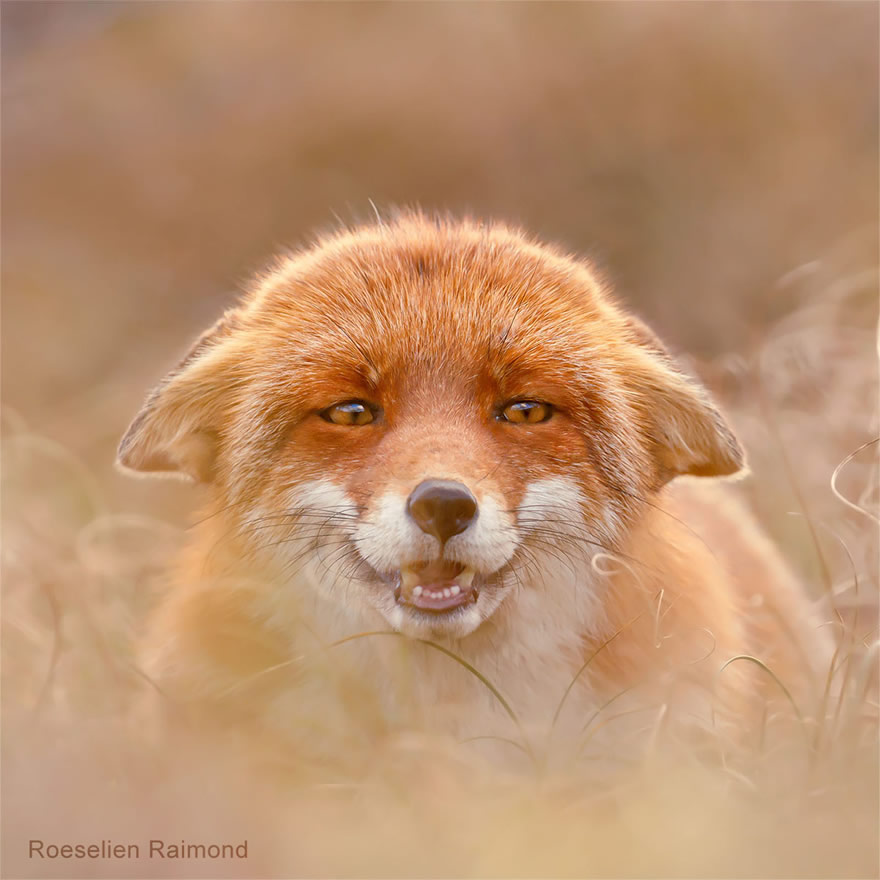
Do foxes have a sense of humor? They sure know how to make a funny face.
64 Personalities
Anyway…all these totally different personalities, are reflected in their faces. And very, very occasionally a cub is born with a cute flat nose, extremely round ears and such a fluffy round body. She looks at me, squints her eyes, I do the same and for a moment the world is perfect again.
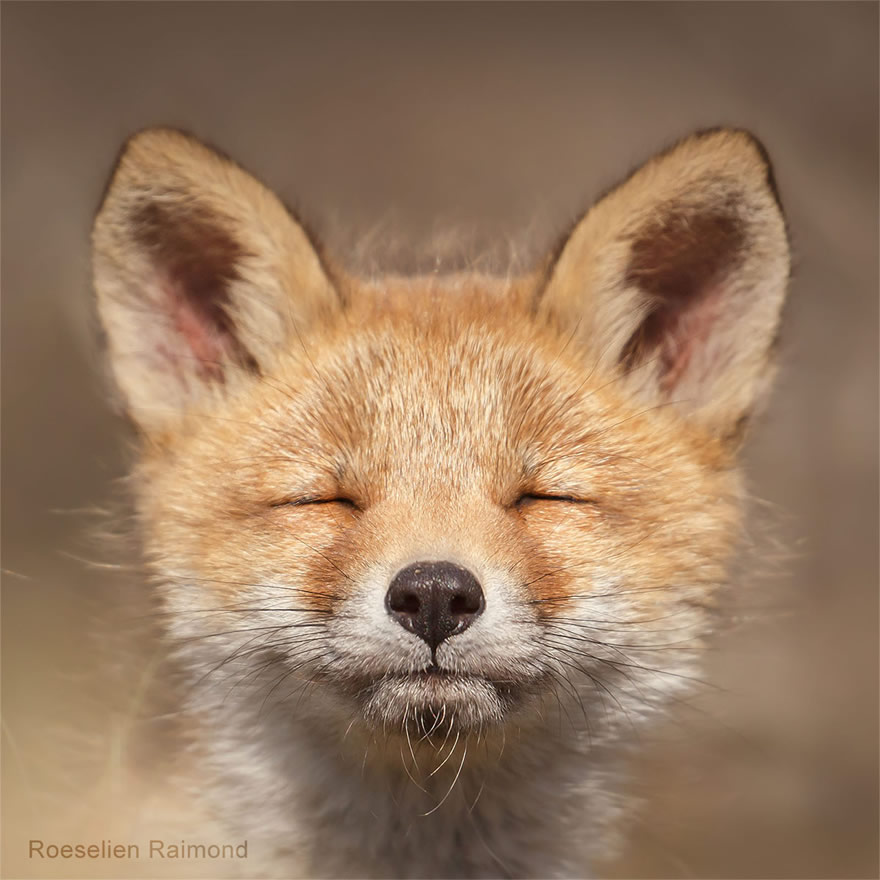
Round ears, round face, squinting eyes…check!
Do you still think that a fox is simply a fox…? Take a deep look into these 128 beautiful eyes and…
think again!
Some foxy facts
Friendly foxes
Don’t tell my beloved cats, but I think foxes might very well be the sweetest animals I have ever met.
Although they can squabble amongst themselves for food or territory, I have never seen them show aggression towards people.
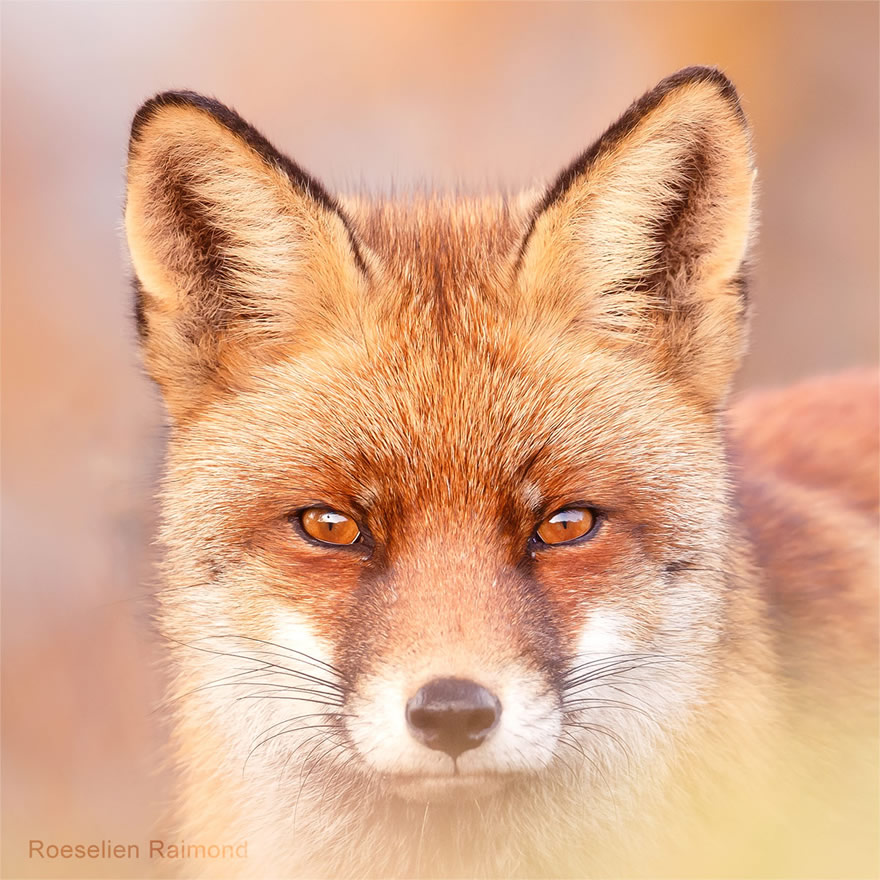
Sissy
As we all know, among our own species, males are dominant. They put themselves out, blow themselves up and like to boss around. With foxes, the so called ‘dog foxes’ are most gentle and they wait quietly until the females have calmed down.
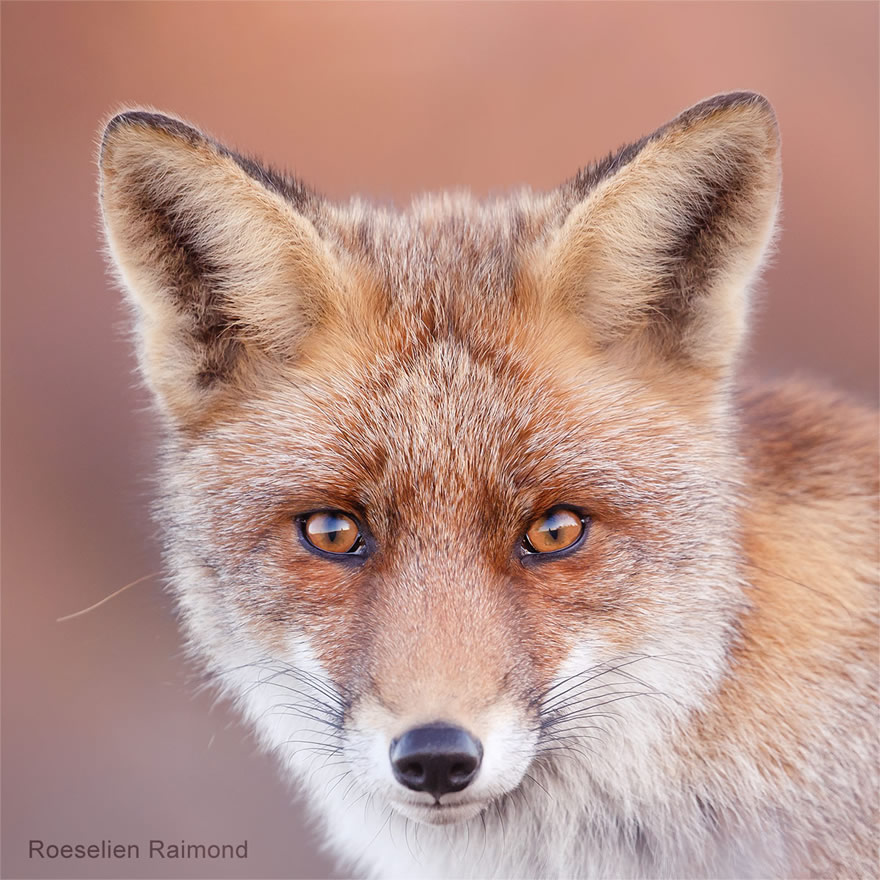
Fox specialties
Each fox has its own hunting specialty. Some are true mouse pounce masters. Others lurk among the reeds for waterfowl. Some foxes even climb trees in search of bird nests!
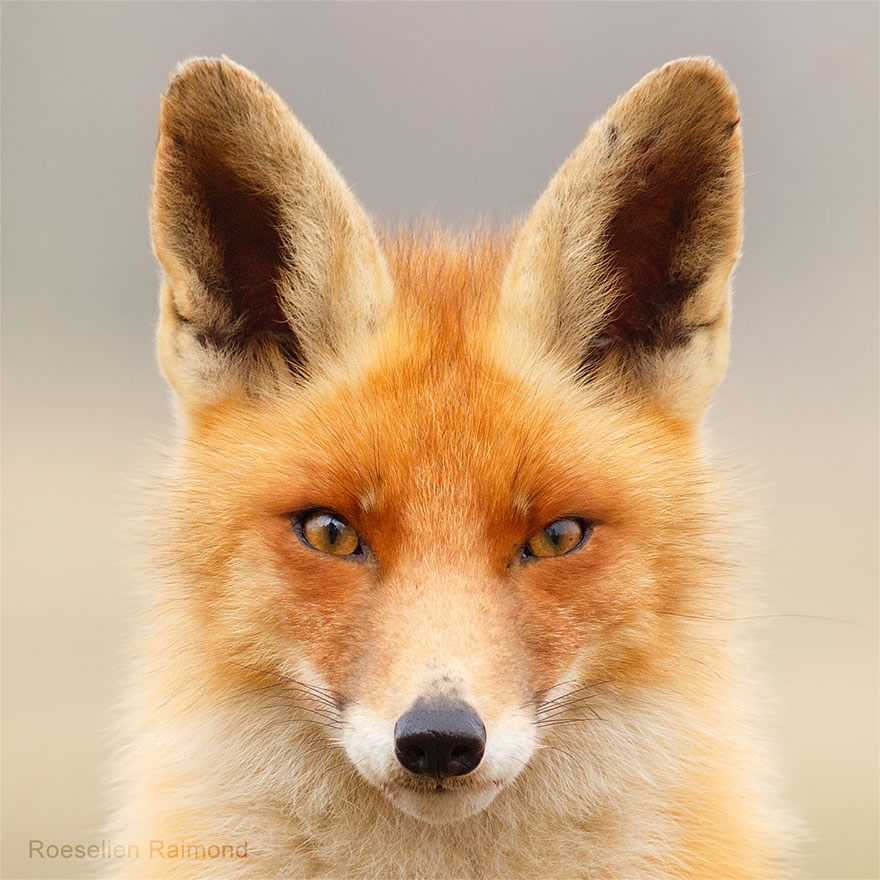
Night owls?
It is often thought that foxes are only nocturnal by nature, but we have made them so by hunting them. Foxes that are not hunted are (also) daily active, with the added advantage that we can enjoy their presence.
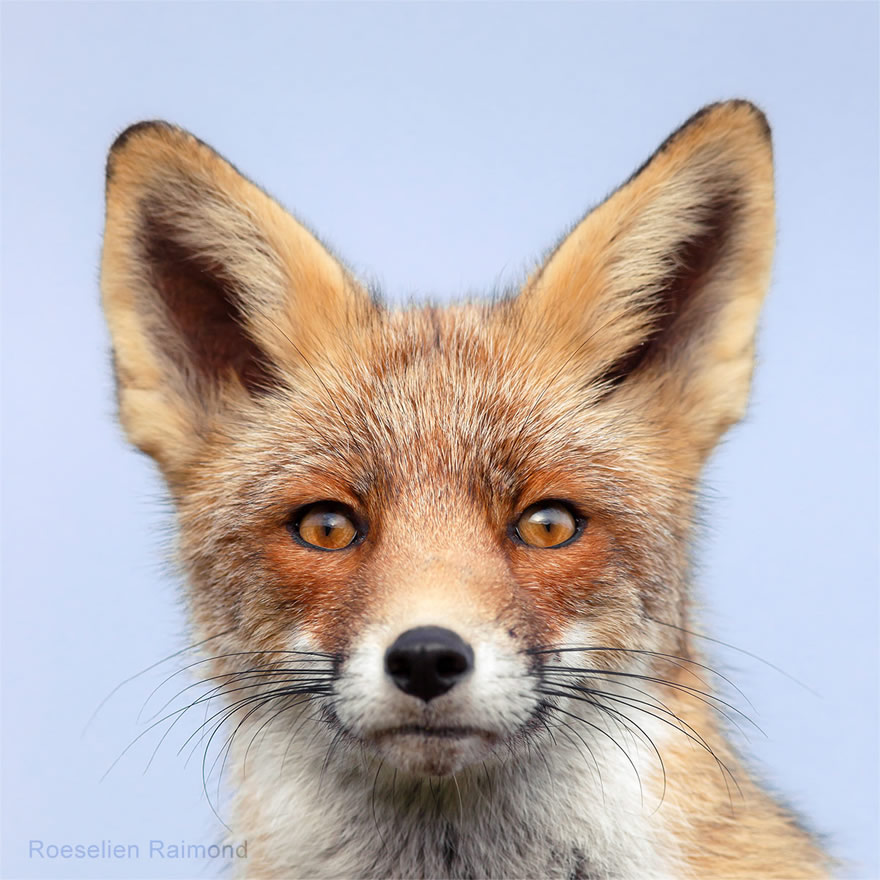
Amazing ears
Did you know that foxes can find larvae by ear? While walking they tilt their heads, ear to the left,
ear to the right. Suddenly they stop…start digging frantically and… gotcha!
Zen Foxes
Foxes fully master the art of Zen. When there is no hunting, feeding or defending to do, then only one
thing is important: Close your eyes, nose in the air and… enjoy. Right here, right now.
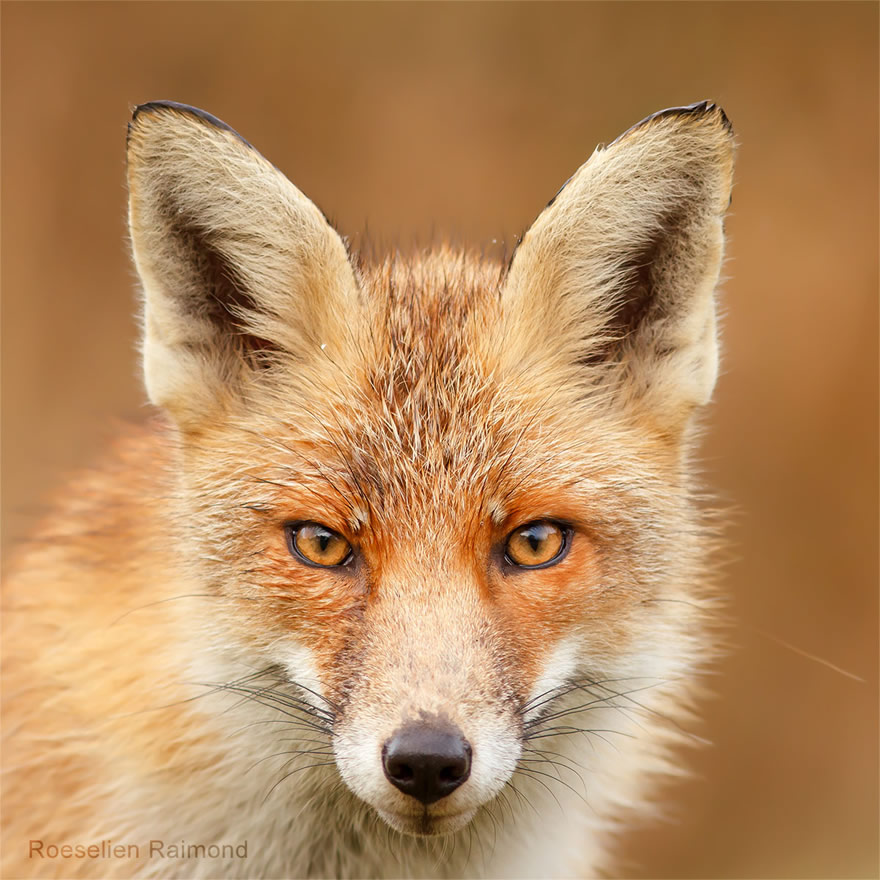
Solitary but social
Although foxes are solitary animals and hunt alone and not in packs like wolves, they have strong family ties. Daughters stay with their mothers for one to two years, learning all the tricks of the fox trade. In return, they help mom raise the cubs by playing and hunting with the new siblings.
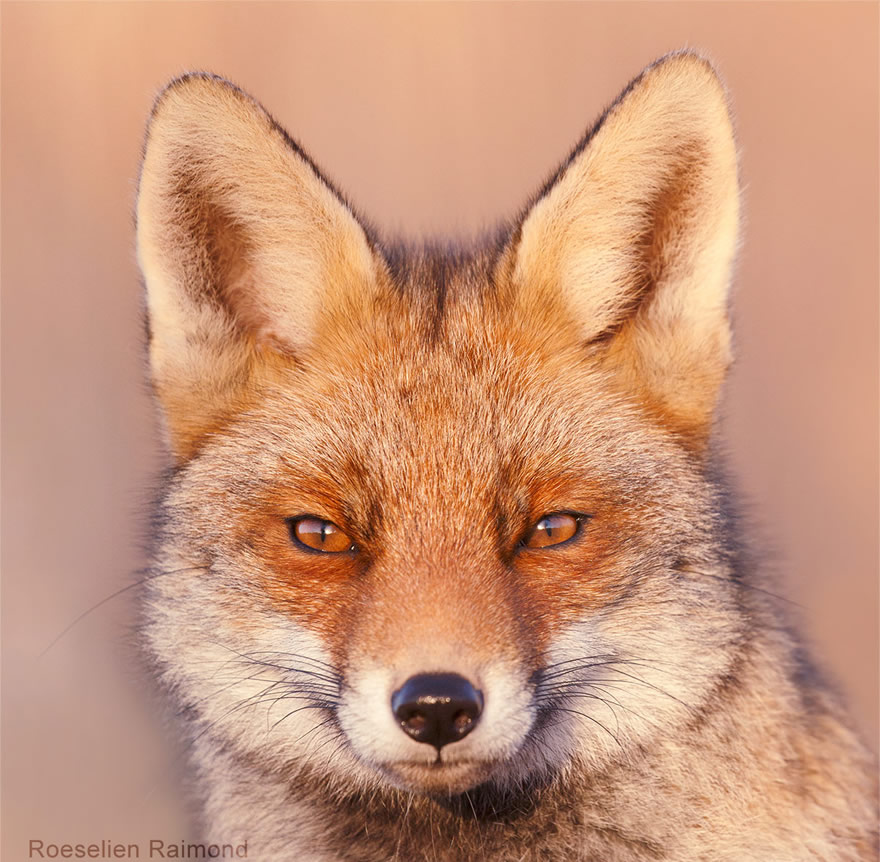
Good parenting
Foxes make great parents. Especially the mothers who continue to care for their cubs for about ten months. After that, the -now fertile- sons are, for obvious reasons, meant to learn to stand on their
own feet.
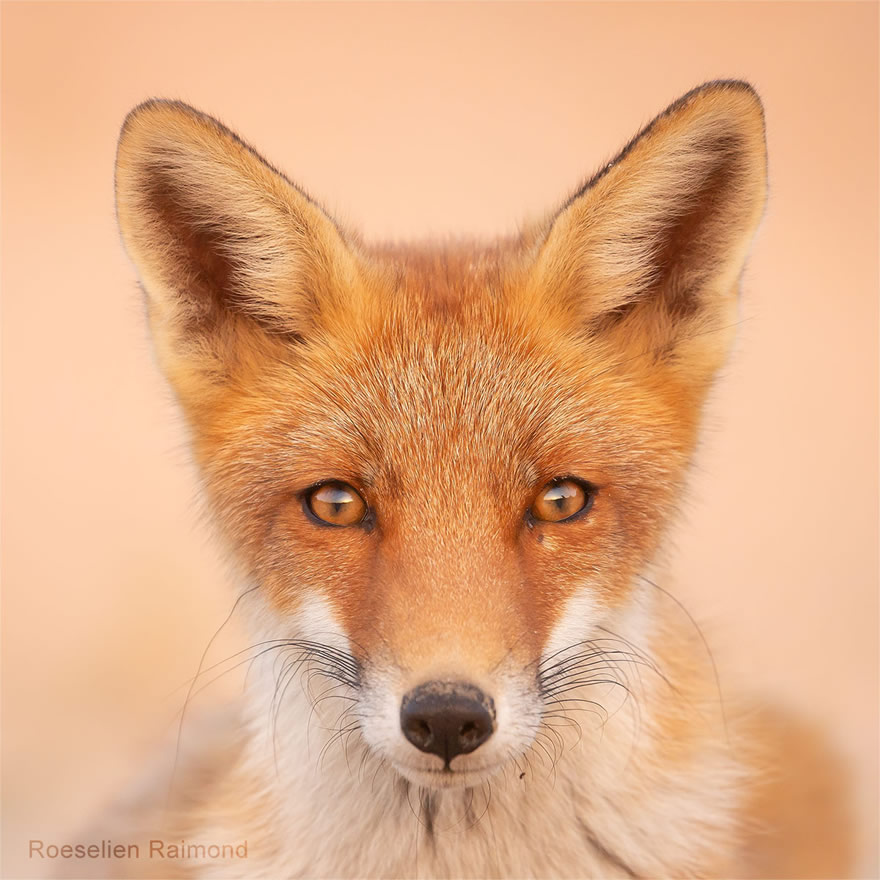
Many flavors
Foxes’ characters may differ as much as human characters. They come in all flavors: Shy and arrogant, from wallflower to cocky, chronically happy or notoriously sad. Helpful or headstrong. Mischievous and cute. Name it and you’ll have a fox version of it.
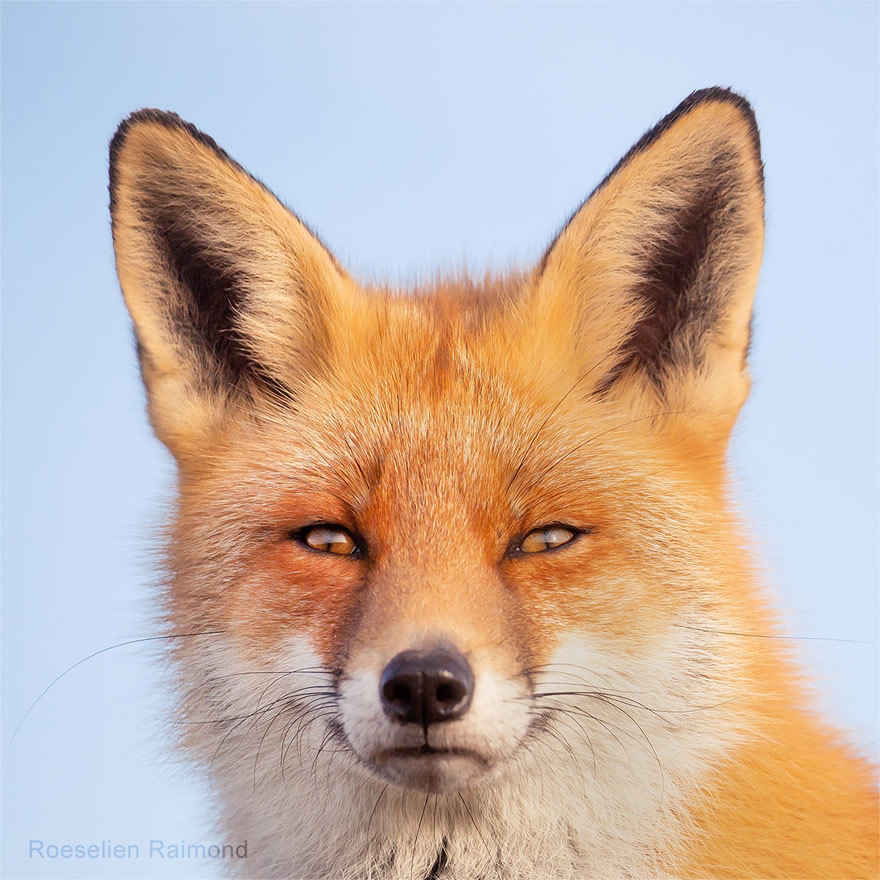
Cuddle bugs
Foxes are great cuddlers. Every excuse is used for a good cuddle session. Under the guise of ‘shall I
just remove a tick’, faces are mutually swabbed non-stop.
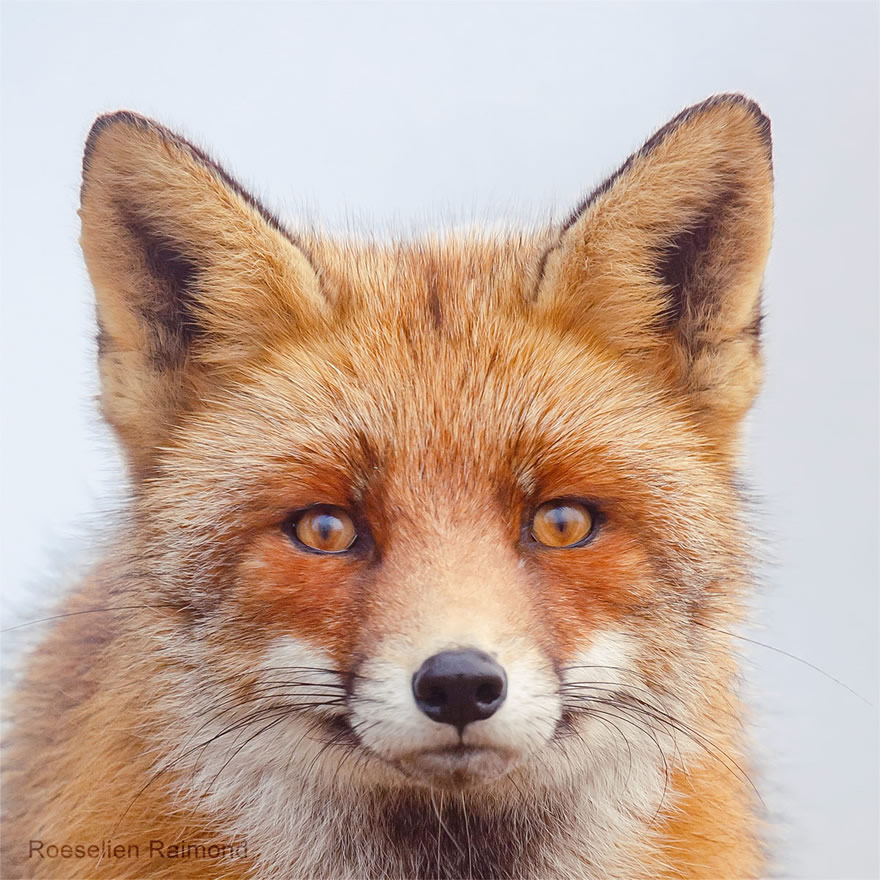
Naughty
Although foxes are much sweeter than I could have ever imagined, they can be a little mischievous at
times. Foxes bury prey for later and mark the spot by peeing over it. Also useful for lazy colleagues,
who casually steal your freshly caught prey.
Animal of many colors
As you can see on the pictures, foxes always have brown eyes. The coat color varies from dull salt and
pepper, to almost golden yellow, to orange red. The color can vary slightly per year and season. And if you’re very lucky you can even find them in black (melanistic), mixed red and black (cross fox) or white (albino).
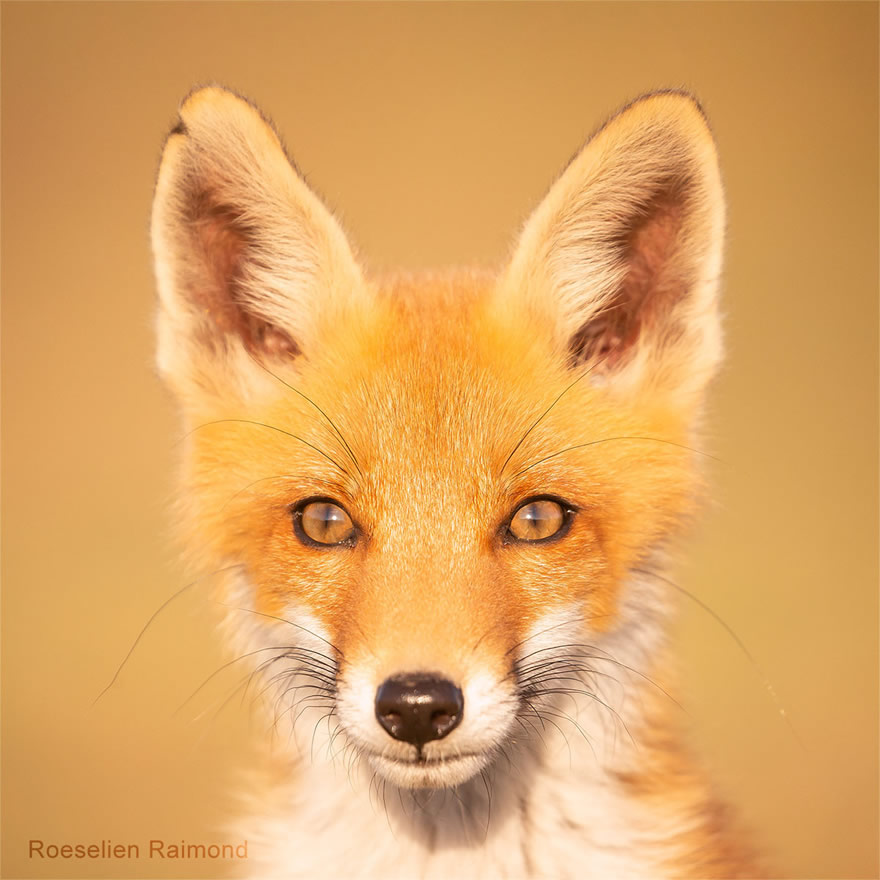
Smiling Fox
They say foxes can’t smile. I firmly doubt that.
